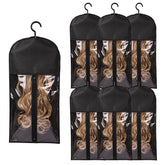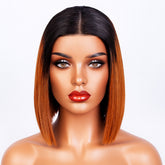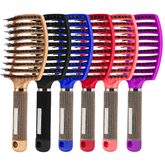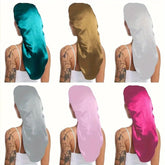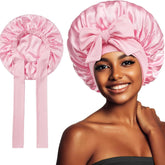Why the viral 'hair clip' migraine trick may actually work

Across social media a simple home remedy has been circulating: people claim that clipping a small hair accessory to the hairline or temple can ease an oncoming migraine. Recently a practising neurologist explained on YouTube why that viral 'hair clip' hack might have a physiological basis. Here we unpack the explanation, summarise what the science currently suggests, and offer sensible guidance if you’re curious to try it.
What the neurologist said — a plausible physiological explanation
The neurologist who addressed the trend described several mechanisms that could explain a short-term reduction in migraine pain after applying a gentle clip. Importantly, the explanation was presented as hypothesis rather than definitive proof — the evidence base for this specific trick is limited — but the logic draws on established pain physiology.
Key ideas include:
- Sensory gating: Applying a mild non-painful mechanical stimulus to the scalp or temple can activate fast-conducting sensory fibres (A-beta fibres). These signals can inhibit pain-transmitting pathways in the spinal cord and brainstem — a concept often referred to as the gate control theory of pain.
- Counter-irritation: Creating a different, benign sensation in the area of head pain can provide temporary distraction and reduce perceived intensity.
- Muscle and vascular effects: Migraine often involves pericranial muscle tension and changes in cranial blood flow. Light pressure or sensory stimulation might alter local muscle activity or circulation, producing relief for some people.
These mechanisms are used in clinical practice in other forms — for example, transcutaneous electrical nerve stimulation (TENS), manual therapy, and targeted pressure or massage — and the hair-clip idea can be seen as an improvised, low-tech analogue.
What the evidence says — cautious optimism, not endorsement
There is no robust, peer-reviewed study specifically validating the hair-clip trick. However, the broader principles the neurologist cited are supported by pain science and by clinical approaches that use sensory stimulation to modulate headache. That means:
- Some people may experience real, short-lived relief from gentle mechanical stimulation.
- It is unlikely to replace evidence-based migraine treatments for those with frequent or severe attacks.
- Individual responses vary widely — what helps one person can do nothing for another.
Neurologists and headache specialists typically recommend established acute treatments (analgesics, triptans where appropriate) and preventative strategies for recurrent migraine. The clip might be a harmless adjunct for occasional use, but it should not delay seeking medical care when needed.
How to try the trick safely (if you wish)
If you decide to experiment, do so sensibly. Here are practical, low-risk steps:
- Choose a soft, smooth hair clip with no sharp edges that could pinch or break the skin.
- Apply it gently — enough to create a noticeable sensation but not to cause pain or dizziness.
- Limit initial trials to a few minutes to see how your body reacts; remove it if it increases pain, causes numbness, or makes you feel unwell.
- Avoid applying over irritated skin, recent scars, or areas of infection.
- Keep a record of any perceived benefit or side effects so you and your clinician can assess whether it’s worth repeating.
If you have an underlying scalp condition, bleeding disorder, or are on blood-thinning medication, check with your GP or specialist before trying any physical intervention.
When to see a clinician
Trying a low-risk sensory trick may be fine for occasional headaches, but consult a health professional if you experience:
- Frequent or worsening migraines impacting daily life
- The sudden onset of an unusually severe headache
- Associated symptoms such as visual changes, confusion, weakness, or persistent vomiting
- New headaches after age 50
Specialists can offer tailored acute treatments, preventive medication where appropriate, and non-drug approaches such as neuromodulation devices that are studied and regulated.
Takeaway
The viral hair-clip migraine hack has a conceivable basis in pain physiology — sensory gating and counter‑irritation are plausible explanations — and a neurologist’s online explanation helps translate those principles for the public. That said, there’s no high-quality research proving the clip is an effective migraine therapy. If you choose to try it, do so gently and treat it as a potential short-term aid rather than a substitute for medical advice or established migraine treatments.
Explore More: Discover related reads from Hairporium — News • Guides • DIYs • Expert Articles.
More From the Experts: Read interviews and insights from stylists and professionals on Hairporium Expert Articles.

